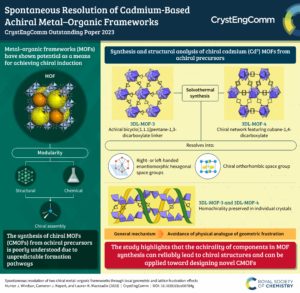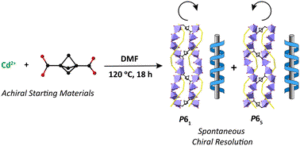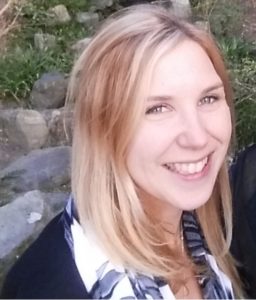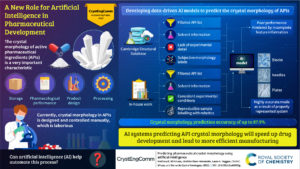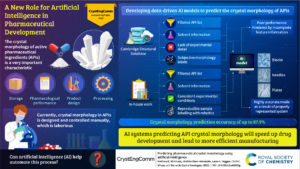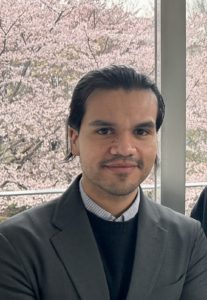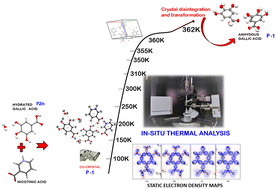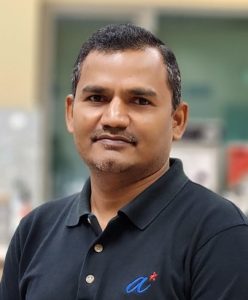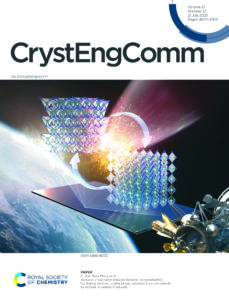 |
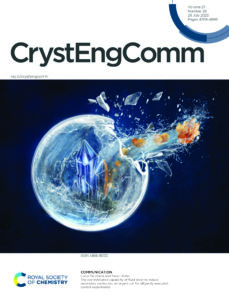 |
|
|
Issue 27 – outside front cover |
Issue 28– outside front cover |
|
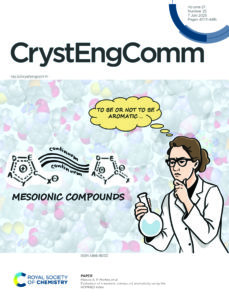 |
 |
 |
|
Issue 25 – outside front cover |
Issue 26 – outside front cover |
Issue 26 – outside back cover |
 |
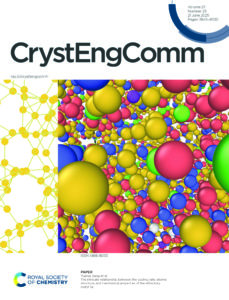 |
 |
|
Issue 23 – outside front cover |
Issue 23 – inside front cover |
Issue 24 – outside front cover |
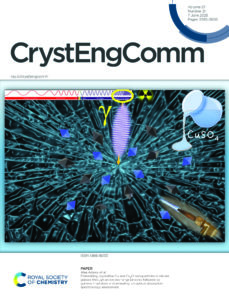 |
 |
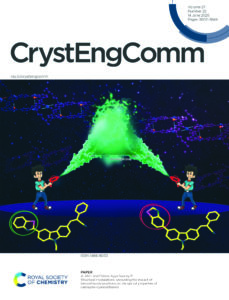 |
|
Issue 21 – outside front cover |
Issue 21 – inside front cover |
Issue 22 – outside front cover |
 |
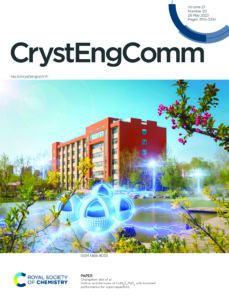 |
 |
|
Issue 20 – outside front cover |
Issue 20 – inside front cover |
Issue 20 – outside back cover |
 |
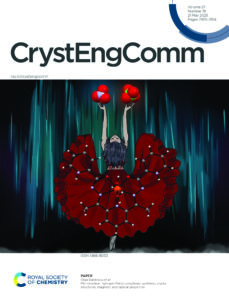 |
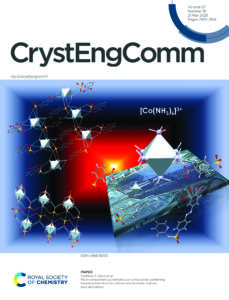 |
|
Issue 18 – inside front cover |
Issue 19 – outside front cover |
Issue 19 – inside front cover |
 |
 |
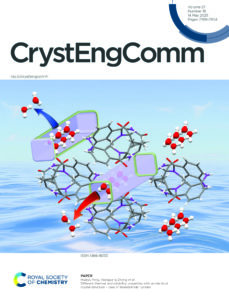 |
|
Issue 16 – back cover |
Issue 17 – front cover |
Issue 18 – outside front cover |
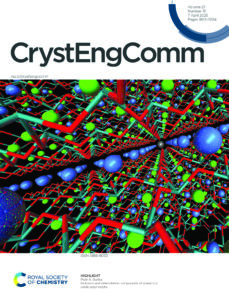 |
 |
 |
|
Issue 13 – inside front cover |
Issue 14 – outside front cover |
Issue 14 – inside front cover |
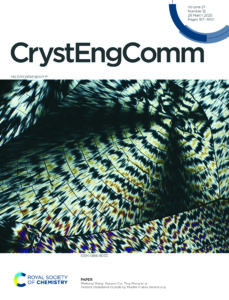 |
 |
 |
|
Issue 12 – outside front cover |
Issue 12 – inside front cover |
Issue 13 – outside front cover |
 |
 |
 |
|
Issue 10 – outside front cover |
Issue 10 – inside front cover |
|
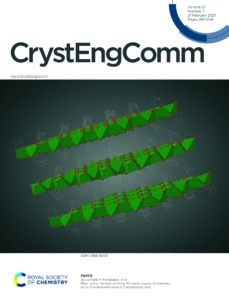 |
 |
 |
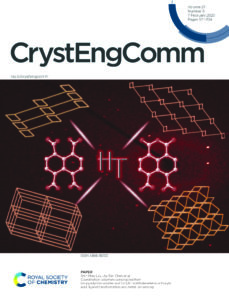 |
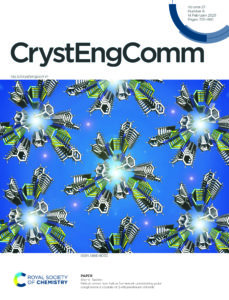 |
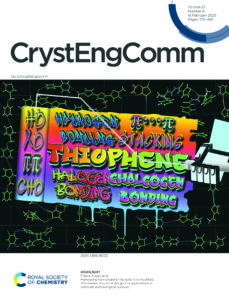 |
|
Issue 5 – inside front cover |
Issue 6 – outside front cover |
Issue 6 – inside front cover |
 |
 |
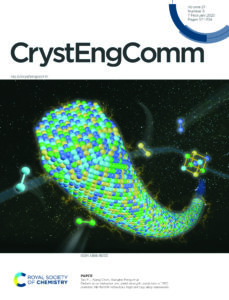 |
| Issue 4 | Issue 5 – outside front cover |
Archive for the ‘Uncategorized’ Category
CrystEngComm 2025 Cover Gallery
Welcoming Sharmarke Mohamed and Ghazala Sadiq to the CrystEngComm Editorial Board

We are delighted to introduce Professor Sharmarke Mohamed (Khalifa University of Science and Technology, UAE) and Dr Ghazala Sadiq (The Cambridge Crystallographic Data Centre, UK) as the latest members of the CrystEngComm Editorial Board!

Professor Sharmarke Mohamed
(ORCiD 0000-0002-5195-2533)
Sharmarke Mohamed is an Associate Professor of Chemistry at Khalifa University (KU), acting as Principal Investigator in the Green Chemistry & Materials Modelling Laboratory. He founded and currently heads the KU Chemical Crystallography Laboratory, offering crystallographic services to KU researchers while forging new collaborations with premier global labs in solid-state chemistry. He also holds the role of Theme Leader for the Center for Catalysis and Separations (CeCaS). Sharmarke graduated with a First Class MSci in Chemistry (2007) and PhD in Chemistry (2011) degrees from University College London, mentored by Prof. Sarah (Sally) L. Price FRS and Prof. Derek A. Tocher. His research, spanning chemical crystallography, computational chemistry, and green chemistry, is reflected in over 70 publications and three patents. At CrystEngComm, Sharmarke oversees the commissioning of computational chemistry manuscripts, striving to elevate the journal’s presence in the Middle East and Asia. Sharmarke joined the Editorial Board in 2025, following service on the Editorial Advisory Board of the journal since 2021, and was honored to be recognized as an Outstanding Reviewer in 2019 for his rigorous and timely reviews for the journal. His brief stint in the pharmaceutical industry led to intellectual property on novel solid forms of generic drugs and contributed to the current U.S. Food and Drug Administration’s guidance of what constitutes a “pharmaceutical cocrystal”.
Sharmarke’s service to the UAE chemical sciences community is extensive. He co-founded the Emirates Crystallographic Society in 2020, acting as Vice President and UAE Councillor to the European Crystallographic Association. As Chair of the American Chemical Society (ACS) UAE Chapter (2023–2024), Sharmarke oversaw a 55% increase in ACS membership from the UAE. He also established KU’s first ACS International Student Chapter in 2022, mentoring a senior chemistry student to become the UAE’s sole COP28 ACS Ambassador in 2023.
Beyond his academic pursuits, Sharmarke cherishes time with his two boys, tries to hone his multilingual skills, enjoys playing padel and seizes opportunities to travel and learn new cultures, whenever the opportunity presents itself.
Sharmarke has given his thoughts on working with the RSC and on the Editorial Board of CrystEngComm in particular:
“The RSC is home to some of the best journals in chemistry and it is my pleasure to be a part of the Editorial Board of CrystEngComm, where I hope to contribute to expanding the reach and visibility of the journal in the Middle East and Asia.”
 Dr Ghazala Sadiq
Dr Ghazala Sadiq
(ORCiD 0000-0001-6638-8464)
Ghazala is part of the Scientific Leadership Team at the CCDC. Ghazala manages the Pfizer Solid Form Design Centre Team where part of her role includes applying the latest knowledge-based informatics techniques to drug development compounds. Ghazala also leads the Crystal Form Consortium, a collaborative venture bringing together scientists from major pharmaceutical industries around the world. Working to leverage the vast wealth of structural knowledge in the CSD, the Consortium’s primary goal is to provide structural informatics tools and insights to address challenges relating to polymorphism, stability, and solid form selection during different stages of the drug development process. She has a keen interest in Crystal Engineering, covering a range of topics including polymorphism, co-crystal design, fundamentals of intermolecular interactions, crystallisation, and the importance of molecular self-assembly in the nucleation of crystalline phases.
Ghazala’s thoughts on working with the RSC on the Editorial Board of CrystEngComm:
“It’s a real privilege to join the CrystEngComm editorial board. The journal plays a key role in advancing crystal engineering, and I look forward to working with the RSC to help shape its continued success”.
Highlights of 2024 from CrystEngComm

Happy new year from the CrystEngComm editorial team!
What a year 2024 has been! CrystEngComm published its 26th volume with over 670 articles in issues, 23 Highlight review articles and 60 Communications, from 47 countries. In total across the year, we published 112 HOT, reviewer recommended articles which included 11 Communications and nine Highlight review articles. Read the last quarter’s HOT articles in this collection.
We are delighted to share some further highlights of CrystEngComm in 2024, including our Outstanding Paper Award winners, the introduction of our cover collection and cover gallery, and our most popular articles from the year.
Editorial board
At the end of January, we were delighted to announce that Christian Doonan (University of Adelaide, Australia) and C. Malla Reddy (Indian Institute of Technology, Hyderabad, India) had been appointed as Co-Editors-in-Chief of CrystEngComm. They succeeded Pierangelo Metrangolo who served as the journal’s Chair for six years.
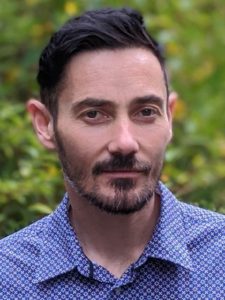 Christian Doonan is a Professor of Chemistry and a South Australian Government Future Industry Making Fellow at the University of Adelaide. He received his PhD at the University of Melbourne and carried out post-doctoral work with Professor Omar Yaghi at the University of California, Los Angeles. His research group focuses on the design and synthesis of Metal-organic Framework materials for application to biotechnology and catalysis.Christian is a member of the international MOF commission and his research has been recognised through several awards including, an Australian Research Council Future Fellowship and a distinguished lectureship award from the Chemical Society of Japan.
Christian Doonan is a Professor of Chemistry and a South Australian Government Future Industry Making Fellow at the University of Adelaide. He received his PhD at the University of Melbourne and carried out post-doctoral work with Professor Omar Yaghi at the University of California, Los Angeles. His research group focuses on the design and synthesis of Metal-organic Framework materials for application to biotechnology and catalysis.Christian is a member of the international MOF commission and his research has been recognised through several awards including, an Australian Research Council Future Fellowship and a distinguished lectureship award from the Chemical Society of Japan.
C Ma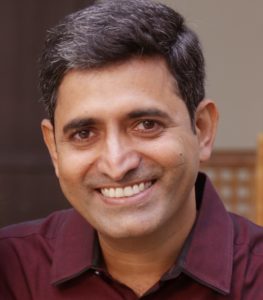 lla Reddy is a Professor in the Department of Chemistry at the Indian Institute of Technology Hyderabad (IITH), India. He obtained his PhD in Crystal Engineering from the School of Chemistry, University of Hyderabad (2001-2006) and carried out postdoctoral work at Karlsruhe Institute of Technology, Germany (2007-2008). He established an independent group at the Indian Institute of Science Education and Research (IISER) Kolkata in 2008 and continued there until he moved to IITH in 2023. He had been an Honorary Visiting Scientist to the University of Bradford (2015-18) and a recipient of the Royal Society of Chemistry’s Mobility Grant, Distinguished Lectureship Award from the Chemical Society of Japan (2017) and Swarnajayanti Fellowship from the Department of Science and Technology, India. His research group is engaged in understanding the mechanical properties of organic solids, including pharmaceutical and optoelectronic crystals. Some of his well-known contributions include the discovery of flexible elastic and plastic organic crystals, designing flexible crystals using Supramolecular Shape Synthons, etc. He has published over 90 research articles.
lla Reddy is a Professor in the Department of Chemistry at the Indian Institute of Technology Hyderabad (IITH), India. He obtained his PhD in Crystal Engineering from the School of Chemistry, University of Hyderabad (2001-2006) and carried out postdoctoral work at Karlsruhe Institute of Technology, Germany (2007-2008). He established an independent group at the Indian Institute of Science Education and Research (IISER) Kolkata in 2008 and continued there until he moved to IITH in 2023. He had been an Honorary Visiting Scientist to the University of Bradford (2015-18) and a recipient of the Royal Society of Chemistry’s Mobility Grant, Distinguished Lectureship Award from the Chemical Society of Japan (2017) and Swarnajayanti Fellowship from the Department of Science and Technology, India. His research group is engaged in understanding the mechanical properties of organic solids, including pharmaceutical and optoelectronic crystals. Some of his well-known contributions include the discovery of flexible elastic and plastic organic crystals, designing flexible crystals using Supramolecular Shape Synthons, etc. He has published over 90 research articles.
CrystEngComm journal covers
We published 44 covers supplied by authors in 2024, and introduced the Articles behind the 2024 journal covers collection as well as the CrystEngComm cover gallery, ensuring great visibility of both the covers and associated articles.
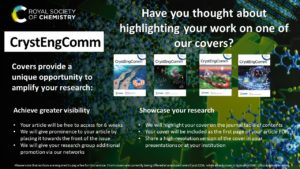
CrystEngComm Outstanding Paper Award
The Outstanding Paper Award is an award aimed at recognising the high-quality work published in CrystEngComm from the previous year, acknowledging the excellence of the paper as a whole and recognising the contributions of all the authors.
The winners of the CrystEngComm Outstanding Paper Award 2023 are Hunter J. Windsor, Cameron J. Kepert and Lauren K. Macreadie, for their work: ‘Spontaneous resolution of two chiral metal–organic frameworks through local geometric and lattice frustration effects’.
| Spontaneous resolution of two chiral metal–organic frameworks through local geometric and lattice frustration effects
Hunter J. Windsor, Cameron J. Kepert and Lauren K. Macreadie* CrystEngComm, 2023, 25, 5428-5435 |
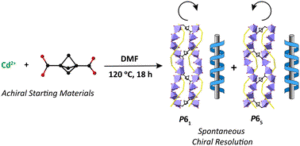 |
The authors presented two chiral metal–organic frameworks that are differentiated by their Cd-centred helical twists and are prepared by spontaneous chiral resolution from rigid, aliphatic, and achiral precursors. Read the winning article here.
Transparent peer review

The RSC launched transparent peer review across its portfolio in 2024.
In the interest of transparency and open science CrystEngComm offers authors the option of transparent peer review, where the editor’s decision letter, reviewers’ comments and authors’ response for all versions of the manuscript are published alongside the article. To find out more about transparent peer review Watch our video.
Most popular articles in 2024
In 2024 our articles received an average of 120 downloads within 90 days of being published, highlighting the excellent visibility your article receives. We are pleased to share a selection of these most popular articles which are all free to access until 30th April 2025.
| Impurity retention and pharmaceutical solid solutions: visualizing the effect of impurities on dissolution and growth using dyed crystals
Anne Nong, Claire Schleper, Abigail Martin, Mitchell Paolello, Fredrik L. Nordstrom and Gerard Capellades CrystEngComm, 2024, 26, 5337-5350 |
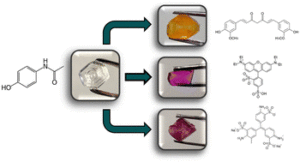 |
| Utilizing 3-methyl-1-butene co-units to tailor phase transition behavior in butene-1 copolymers
Jiazheng Shen, Wei Li, Ruijun Zhao, Yingzhuo Liu and Zhe Ma CrystEngComm, 2024, 26, 51-60 |
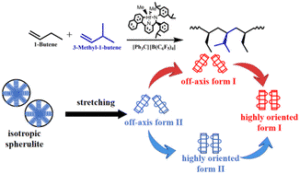 |
| Project M: investigating the effect of additives on calcium carbonate crystallisation through a school citizen science program
Claire A. Murray, Project M Scientists, Laura Holland, Rebecca O’Brien, Alice Richards, Annabelle R. Baker, Mark Basham, David Bond, Leigh D. Connor, Sarah J. Day, Jacob Filik, Stuart Fisher, Peter Holloway, Karl Levik, Ronaldo Mercado, Jonathan Potter, Chiu C. Tang, Stephen P. Thompson and Julia E. Parker CrystEngComm, 2024, 26, 753-763 |
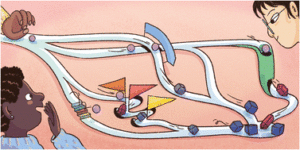 |
We would love you to be part of the future of CrystEngComm so on behalf of the Co-Editors-in-Chief of CrystEngComm, Professors Christian Doonan and C. Malla Reddy, we invite you to submit your research to CrystEngComm. See our author guidelines for information on our article types or find out more about the advantages of publishing in a Royal Society of Chemistry journal.
From all the CrystEngComm team, we thank you for your continued interest in and support of the journal and wish you well for 2025!
CrystEngComm 2024 Cover Gallery
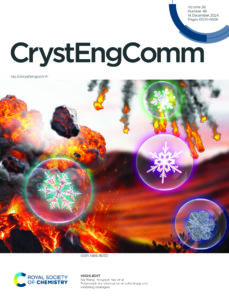 |
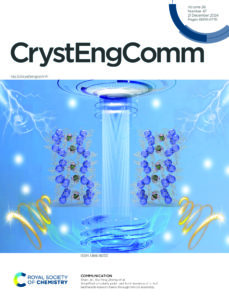 |
 |
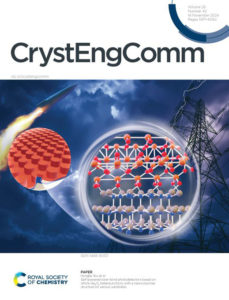 |
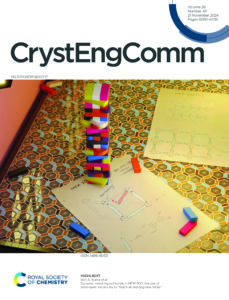 |
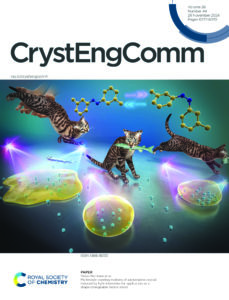 |
|
Issue 42– Inside Front Cover |
||
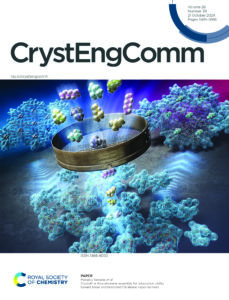 |
 |
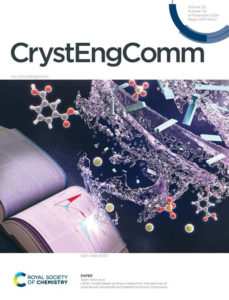 |
| Issue 42 – Outside Front Cover | ||
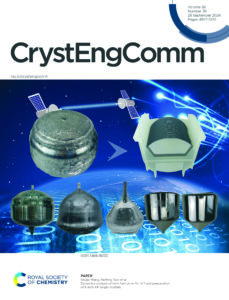 |
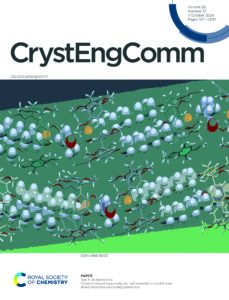 |
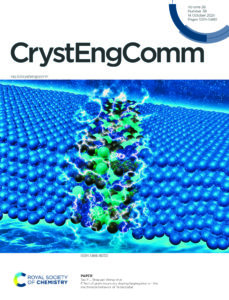 |
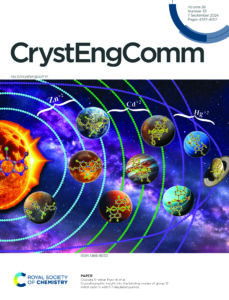 |
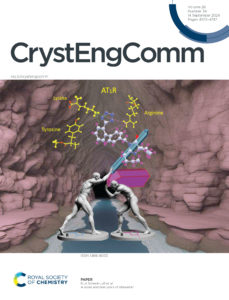 |
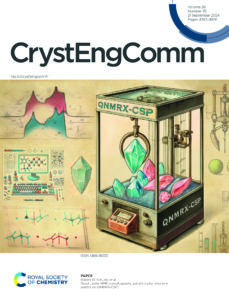 |
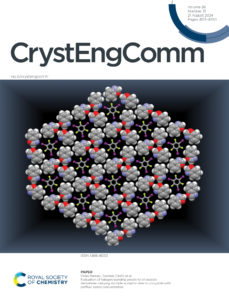 |
 |
 |
| Issue 31 – Inside Front Cover |
Issue 32 – Outside Front Cover |
Issue 32 – Inside Front Cover |
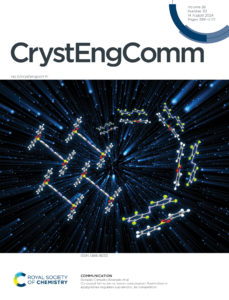 |
 |
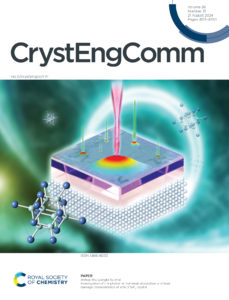 |
|
Issue 30 – Outside Front Cover |
Issue 30 – Inside Front Cover |
Issue 31 – Outside Front Cover |
 |
 |
 |
 |
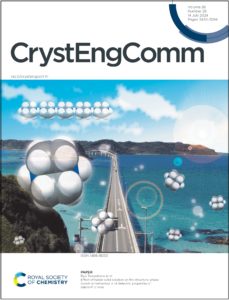 |
 |
| Issue 26 | ||
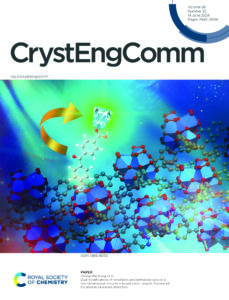 |
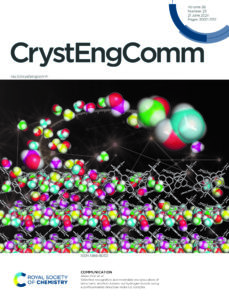 |
 |
 |
 |
 |
 |
 |
 |
| Issue 16 | Issue 17 | Issue 17 |
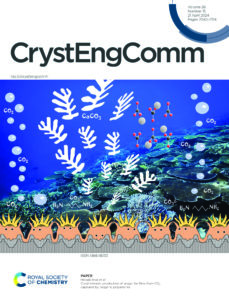 |
 |
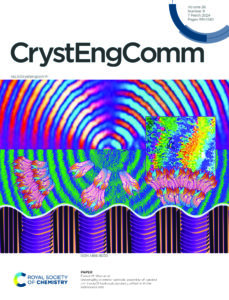 |
| Issue 15 | Issue 14 | Issue 9 |
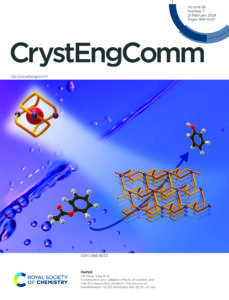 |
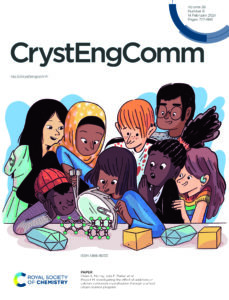 |
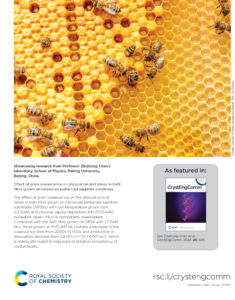 |
| Issue 7 | Issue 6 | Issue 5 |
 |
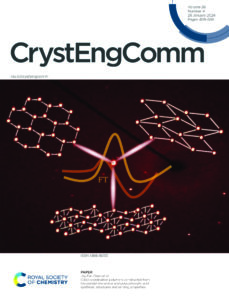 |
 |
| Issue 5 | Issue 4 | Issue 3 |
CrystEngComm Outstanding Paper Award, 2023
We are delighted to announce the winner of the CrystEngComm Outstanding Paper Award, 2023!
First launched in 2022, the Outstanding Paper Award is an award aimed at recognising the high-quality work published in CrystEngComm from the previous year, acknowledging the excellence of the paper as a whole and recognising the contributions of all the authors.
Congratulations to the winners of the CrystEngComm Outstanding Paper Award 2023, as selected by the Editorial Board, for their work on Spontaneous resolution of two chiral metal–organic frameworks through local geometric and lattice frustration effects: Hunter J. Windsor, Cameron J. Kepert and Lauren K. Macreadie.
The authors presented two chiral metal–organic frameworks that are differentiated by their Cd-centred helical twists and are prepared by spontaneous chiral resolution from rigid, aliphatic, and achiral precursors.
Read the full outstanding article:
Meet the authors of this Outstanding Paper
Hunter J. Windsor
 Hunter Windsor received his PhD in chemistry in 2022 from the University of Sydney. His research involved exploring spin crossover metal–organic frameworks and modulation of their magnetic properties through guest confinement. He is currently a postdoctoral research associate for Professor Les Field at the University of New South Wales where he is investigating the reactivity of small molecules such as carbon dioxide and acetylene with ruthenium-centred organometallic complexes. Hunter is passionate about teaching crystallography and is interested in developing new methods for crystallising reactive species that have otherwise eluded characterisation.
Hunter Windsor received his PhD in chemistry in 2022 from the University of Sydney. His research involved exploring spin crossover metal–organic frameworks and modulation of their magnetic properties through guest confinement. He is currently a postdoctoral research associate for Professor Les Field at the University of New South Wales where he is investigating the reactivity of small molecules such as carbon dioxide and acetylene with ruthenium-centred organometallic complexes. Hunter is passionate about teaching crystallography and is interested in developing new methods for crystallising reactive species that have otherwise eluded characterisation.
Cameron Kepert is a Professor in the School of Chemistry at the University of Sydney. He received his B.Sc. (Hons) from the University of Western Australia, PhD from the Royal Institution of Great Britain/University of London and was a Junior Research Fellow at the University of Oxford from 1995-1998. He is a recipient of the Australian Prime Minister’s Prize for Physical Scientist of the Year, the Le Fèvre Memorial Prize of the Australian Academy of Science, the Burrows Award and Rennie Medal of the Royal Australian Chemical Institute. His research interests include nanoporous metal—organic framework materials, spin-crossover, molecular magnets, molecular conductors, and negative thermal expansion materials.
Lauren K. Macreadie
Dr Lauren Macreadie is an ARC DECRA fellow and a UNSW Scientia Fellow at the University of New South Wales and investigates how porous materials can be used to solve our key energy questions around hydrogen storage and transport, and chemical separations. Following the completion of her PhD at the CSIRO and Monash University in 2016, she worked at Trinity College in Dublin, Ireland, on water splitting MOF systems, followed by research with the CSIRO in Melbourne on MOFs as adsorbents for respiratory canisters with the Defense Science and Technology group. Lauren then became a lecturer at Massey University in New Zealand in 2020. In 2021 she began her DECRA fellowship at the University of Sydney and moved to UNSW in 2022.
Please join us in congratulating this year’s winners!
The Articles behind the covers
We are delighted to share with you our latest collection showcasing the articles behind the 2024 CrystEngComm covers.
This latest collection of recently published articles brings together all the cover articles published so far this year, which showcases the wide range of research found in the journal. Further articles will be added to this collection as they are published.
Here is a selection of some of the articles in the collection:
| Nitro group and K+-based secondary building units for the self-assembly of 3D coordination polymers built on dinuclear dianionic helicate connectors
Raúl Mendoza-Báez, Alan Molina-Renteria and Juan Olguín CrystEngComm, 2024, 26, 2346-2352 |
 Outside front cover of issue 18 Outside front cover of issue 18 |
| Pure organic TPB single crystal for direct X-ray detection
Kai Jiang, Lingyan Xu, Rongjin Shang, Lu Liang, Yingming Wang, Zhentao Qin and Wanqi Jie CrystEngComm, 2024, 26, 2241-2247 |
|
| Effect of grain coalescence on dislocation and stress in GaN films grown on nanoscale patterned sapphire substrates
Zuojian Pan, Zhizhong Chen, Yiyong Chen, Haodong Zhang, Han Yang, Ling Hu, Xiangning Kang, Ye Yuan, Chuanyu Jia, Zhiwen Liang, Qi Wang, Guoyi Zhang and Bo Shen CrystEngComm, 2024,26, 620-630 |
We hope you enjoy these articles and the rest in the collection. Read these articles for free until 15th July 2024.
Have you thought about highlighting your work on one of our covers? *
Covers provide a unique opportunity to amplify your research:
Achieve greater visibility:
- Your article will be free to access for 6 weeks.
- We will give prominence to your article in the issue.
- We will give your research group additional promotion via our networks.
- We will include your article in the covers collection and in the cover gallery on our blog.
Showcase your research:
- We will highlight your cover on the journal table of contents.
- Your cover is included as the first page of your article PDF.
- We will share a high-resolution version of the cover for you to use in presentations or display at your institution.
If you are interested in showcasing your research on one of our covers, once your article has been accepted for publication please do contact the Editorial Team for further information: Crystengcomm@rsc.org
* Please note that authors are required to pay a fee for this service. Front covers are currently being offered at a reduced rate of just £250, while a back cover is typically £1000 (plus applicable taxes).
CrystEngComm: Highlights of 2023
What a year 2023 was! CrystEngComm celebrated 25 volumes, over 1.2 million article downloads, over 575 articles published, including 23 Highlight review articles and 59 Communications, from 47 countries with three themed collections and four Editor’s Collections.
A celebration of 25 volumes of CrystEngComm
The publication of the 25th volume of CrystEngComm in 2023 was another milestone for the journal. From the launch of CrystEngComm in 1999 as one of the first peer reviewed online-only chemistry journals, it has moved forward with increasing submissions, from being a journal with no issues, to monthly, then bimonthly and finally weekly publication, publishing almost 15,000 articles in 25 years, featuring authors from 105 countries across six continents. CrystEngComm truly is an international journal with an international readership, authorship and Editorial Board. To mark this exciting milestone for the journal in 2023 a collection of articles and highlights, representing some of the most highly-cited work across the areas of research published in CrystEngComm over the years was collated. Read the collection here.
Editorial Board
We were delighted to welcome two new members to the Editorial Board in 2023: Professor Bin Zhao, Nankai University, China and Professor Changquan Calvin Sun, University of Minnesota, USA.
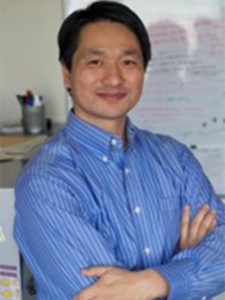 Changquan Calvin Sun is Professor of Pharmaceutics at the University of Minnesota, USA, from which he received his PhD. in Pharmaceutics in 2000. After spending 8 years in the pharmaceutical industry, he joined the Department of Pharmaceutics as an Assistant Professor and was promoted to Full Professor in 2017. Professor Sun’s research focuses on efficient formulation design of high-quality tablet products through the appropriate application of materials science and engineering principles. Two main areas of his current research are 1) crystal and particle engineering for superior pharmaceutical properties; and 2) fundamental understanding of pharmaceutical processes, including powder compaction. He is a Fellow of the American Association for the Advancement of Science (AAAS), a Fellow of the American Association of Pharmaceutical Scientists (AAPS), and a Fellow of the Royal Society of Chemistry (RSC). Professor Sun received the 2019 Ralph Shangraw Memorial Award from the International Pharmaceutical Excipient Council (IPEC) and the 2022 David J. W. Grant Distinguished Scholar Award in Basic Pharmaceutics from the National Institute of Pharmaceutical Technology and Education (NIPTE).
Changquan Calvin Sun is Professor of Pharmaceutics at the University of Minnesota, USA, from which he received his PhD. in Pharmaceutics in 2000. After spending 8 years in the pharmaceutical industry, he joined the Department of Pharmaceutics as an Assistant Professor and was promoted to Full Professor in 2017. Professor Sun’s research focuses on efficient formulation design of high-quality tablet products through the appropriate application of materials science and engineering principles. Two main areas of his current research are 1) crystal and particle engineering for superior pharmaceutical properties; and 2) fundamental understanding of pharmaceutical processes, including powder compaction. He is a Fellow of the American Association for the Advancement of Science (AAAS), a Fellow of the American Association of Pharmaceutical Scientists (AAPS), and a Fellow of the Royal Society of Chemistry (RSC). Professor Sun received the 2019 Ralph Shangraw Memorial Award from the International Pharmaceutical Excipient Council (IPEC) and the 2022 David J. W. Grant Distinguished Scholar Award in Basic Pharmaceutics from the National Institute of Pharmaceutical Technology and Education (NIPTE).
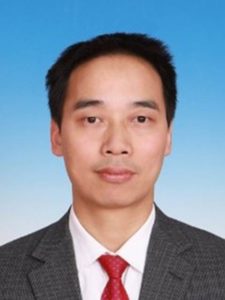 Bin Zhao is a Distinguished Professor at Nankai University. He received his PhD degree from Nankai University in 2004 and has worked as a Full Professor at the Department of Chemistry since 2009. His current research interests focus on the construction of complicated metal clusters and structure, luminescence and catalysis of cluster-based coordination polymers, as well as their applications in the fields of energy, environment and health, such as the conversion and utilization of CO2, water splitting, luminescent probes etc. The related research won the support of the National Outstanding Youth Science Fund. Bin Zhao has published over 180 research papers and has won various awards including the National Hundred Outstanding Doctoral Dissertation Award (2006), the Chinese Chemical Society Prize for Young Scientists (2006), the Program for New Century Excellent Talents in University (2007) and the Youth Science and Technology Innovation Leader (2017).
Bin Zhao is a Distinguished Professor at Nankai University. He received his PhD degree from Nankai University in 2004 and has worked as a Full Professor at the Department of Chemistry since 2009. His current research interests focus on the construction of complicated metal clusters and structure, luminescence and catalysis of cluster-based coordination polymers, as well as their applications in the fields of energy, environment and health, such as the conversion and utilization of CO2, water splitting, luminescent probes etc. The related research won the support of the National Outstanding Youth Science Fund. Bin Zhao has published over 180 research papers and has won various awards including the National Hundred Outstanding Doctoral Dissertation Award (2006), the Chinese Chemical Society Prize for Young Scientists (2006), the Program for New Century Excellent Talents in University (2007) and the Youth Science and Technology Innovation Leader (2017).
CrystEngComm Outstanding Paper Award
The first Outstanding Paper Award was awarded in 2023 and is a new award aimed at recognising the high-quality work published in CrystEngComm from the previous year, acknowledging the excellence of the paper as a whole and recognising the contributions of all the authors.
The winners of the CrystEngComm Outstanding Paper Award 2022, as selected by the Editorial Board for their work on Predicting pharmaceutical crystal morphology using Artificial Intelligence, were Matthew R. Wilkinson, Uriel Martinez-Hernandez, Laura K. Huggon, Chick C. Wilson and Bernardo Castro Dominguez.
The authors presented the use of artificial intelligence to predict the morphology of crystallizing active pharmaceutical ingredients, first using publicly available data, and then using their own screening efforts to address the limitations they identified.
Read the article here
CrystEngComm themed collections in 2023
Data Driven Crystal Engineering
This collection, guest edited by Professor Dongfeng Xue and Dr Haitao Zhao, aims to develop the ‘Fourth Paradigm’; revolutionizing crystalline materials R&D methods using advanced data-driven approaches to crystalline materials discovery.
Biomolecular Crystal Engineering
This collection, guest edited by Professor Claudia Pigliacelli and CrystEngComm Editorial Board Chair Professor Pierangelo Metrangolo, features work covering several aspects of crystallization processes involving biomolecules, from the production of single crystals up to their applications as materials in several high-end fields, ranging from catalysis to nanomedicine.
This collection guest edited by Professor Susan Bourne, Professor Delia Haynes and Professor Patrice Kenfack Tsobnang celebrates the diversity and excellence of research in crystal engineering being carried out across Africa.
Two of our most popular articles published in 2023
|
|
|
|
A to Z of polymorphs related by proton transfer Amy Woods-Ryan, Cheryl L. Doherty and Aurora J. Cruz-Cabeza CrystEngComm, 2023,25, 2845-2858 |
 |
|
|
|
|
CrystEngComm, 2023,25, 2479-2484 |
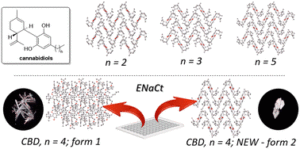 |
CrystEngComm Editor’s Collections, 2023
Curated by Advisory Board members, these collections highlight a number of previously published articles from the journal which the Guest Editor has personally chosen to showcase a specific area of research. The Editor’s Collections published in 2023 are:
Editor’s Collection: Engineering zeolitic imidazolate framework-8-based materials: This collection of recently published articles focusing on Engineering zeolitic imidazolate framework-8-based materials has been handpicked by CrystEngComm Advisory Board Member, Professor Paolo Falcaro, TU Graz, Austria.
Editor’s Collection: The application of quantum crystallography to solid-state pharmaceuticals: This collection of recently published articles handpicked by CrystEngComm Advisory Board Members, Professor Simon Coles, University of Southampton, UK and Dr Srinivasulu Aitipamula, Institute of Sustainability for Chemicals, Energy and Environment, Singapore, is dedicated to the rapidly-growing field of quantum crystallography and features original research articles from experts in the field, highlighting the latest advancements and future directions of Quantum Crystallography in understanding the structure and properties of pharmaceutical-like materials and organic solids.
Editor’s Collection: Advances in nanocrystal heterojunctions: This collection of recently published articles focusing on nanocrystal heterojunctions has been handpicked by CrystEngComm Advisory Board Member, Professor Georg Garnweitner, Technische Universität Braunschweig, Germany.
Editor’s Collection: Non-classical crystallization processes: This collection of recently published articles focusing on non-classical crystallization processes has been handpicked by CrystEngComm Advisory Board Member, Associate Professor Franca Jones, Curtin University, Australia.
From all the CrystEngComm team, we thank you for your continued interest in and support of the journal.
CrystEngComm Outstanding Paper Award, 2022
We are delighted to announce the winner of the CrystEngComm Outstanding Paper Award, 2022
The Outstanding Paper Award is a new award aimed at recognising the high-quality work published in CrystEngComm from the previous year, acknowledging the excellence of the paper as a whole and recognising the contributions of all the authors.
Congratulations to the winners of the CrystEngComm Outstanding Paper Award 2022, as selected by the Editorial Board, for their work on Predicting pharmaceutical crystal morphology using Artificial Intelligence: Matthew R. Wilkinson, Uriel Martinez-Hernandez, Laura K. Huggon, Chick C. Wilson and Bernardo Castro Dominguez.
The authors presented the use of artificial intelligence to predict the morphology of crystallizing active pharmaceutical ingredients, first using publicly available data, and then using their own screening efforts to address the limitations they identified.
Meet the authors of this Outstanding Paper
Matthew R. Wilkinson
Matthew is currently in the closing stages of completing of his PhD, with his thesis titled “Deep Learning for Solid Form Engineering”. Matthew’s PhD was undertaken as part of the Department of Chemical Engineering at the University of Bath in partnership with the Institute for Sustainability and CMAC future manufacturing hub. Prior to his PhD studies, Matthew graduated from the Department of Chemistry at the University of Bath with an MChem Chemistry for Drug Discovery with Industrial Training. Matthew has undertaken further industrial placements with the Alan Turing Institute and Ignota Labs during his PhD which have furthered his research and career interests, which now align with applying Artificial Intelligence to solve real-world challenges in industrial and research settings.
Uriel Martinez-Hernandez
 Uriel received his MSc in Computer Science from the Centre for Research and Advanced Studies, Mexico in 2008, and his PhD in Robotics and Machine Learning from the University of Sheffield in 2015. He was a Research Associate and Research Fellow at Sheffield Robotics, University of Sheffield and the Institute for Design, Robotics and Optimisation (iDRO), University of Leeds, respectively. He is currently a Lecturer (Assistant Professor) in Robotics and Autonomous Systems at the University of Bath, Director of MSc in Robotics and Autonomous Systems, core member of the Centre for Autonomous Robotics (CENTAUR) and CDT in Accountable, Responsible and Transparent Artificial Intelligence. His research interests include machine learning, multimodal sensing and active perception, wearable assistive robotics, autonomous robots and human–robot interaction.
Uriel received his MSc in Computer Science from the Centre for Research and Advanced Studies, Mexico in 2008, and his PhD in Robotics and Machine Learning from the University of Sheffield in 2015. He was a Research Associate and Research Fellow at Sheffield Robotics, University of Sheffield and the Institute for Design, Robotics and Optimisation (iDRO), University of Leeds, respectively. He is currently a Lecturer (Assistant Professor) in Robotics and Autonomous Systems at the University of Bath, Director of MSc in Robotics and Autonomous Systems, core member of the Centre for Autonomous Robotics (CENTAUR) and CDT in Accountable, Responsible and Transparent Artificial Intelligence. His research interests include machine learning, multimodal sensing and active perception, wearable assistive robotics, autonomous robots and human–robot interaction.
Laura Huggon
 Laura has recently graduated from the University of Bath with an MSc in Molecular Biosciences during which time she worked as a research assistant in the Smart Process Engineering Lab. Laura is now in the first year of her PhD at King’s College London, where her research explores synaptic dysfunction in TDP-43 amyotrophic lateral sclerosis and frontotemporal dementia, as part of the UK Dementia Research Institute. Laura also holds a BSc Biochemistry with Industrial Training from the University of Bath. Laura’s career goals and research interests centre around furthering understanding of the mechanisms behind neurodegenerative conditions.
Laura has recently graduated from the University of Bath with an MSc in Molecular Biosciences during which time she worked as a research assistant in the Smart Process Engineering Lab. Laura is now in the first year of her PhD at King’s College London, where her research explores synaptic dysfunction in TDP-43 amyotrophic lateral sclerosis and frontotemporal dementia, as part of the UK Dementia Research Institute. Laura also holds a BSc Biochemistry with Industrial Training from the University of Bath. Laura’s career goals and research interests centre around furthering understanding of the mechanisms behind neurodegenerative conditions.
Chick Wilson
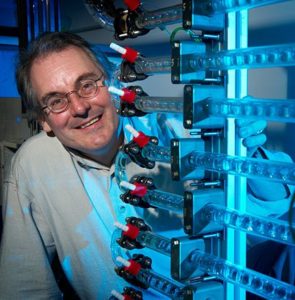 Chick Wilson is Emeritus Professor of Chemistry at the University of Bath; prior to his retirement in 2021, he was Associate Dean for Research and Chair of Physical Chemistry. His almost 40 years research career in structural chemistry and crystallisation science was split roughly 50:50 in time between posts in national labs (Rutherford Appleton) and in academia (Universities of Glasgow, Bath). He was involved in many larger projects including at neutron and synchrotron radiation central facilities, as a founder member of the CMAC academic-industry Continuous Manufacturing and Advanced Crystallisation consortium, and the Bath M4 metastable materials programme. He held many advisory roles in the UK and overseas including with EPSRC, STFC and ILL, Grenoble
Chick Wilson is Emeritus Professor of Chemistry at the University of Bath; prior to his retirement in 2021, he was Associate Dean for Research and Chair of Physical Chemistry. His almost 40 years research career in structural chemistry and crystallisation science was split roughly 50:50 in time between posts in national labs (Rutherford Appleton) and in academia (Universities of Glasgow, Bath). He was involved in many larger projects including at neutron and synchrotron radiation central facilities, as a founder member of the CMAC academic-industry Continuous Manufacturing and Advanced Crystallisation consortium, and the Bath M4 metastable materials programme. He held many advisory roles in the UK and overseas including with EPSRC, STFC and ILL, Grenoble
Bernardo Castro-Dominguez
Bernardo Castro-Dominguez is an Assistant Professor in Chemical Engineering at the University of Bath, where he also holds the prestigious position of Co-Director of the Centre for Digital Manufacturing and Design (dMaDe). He received his PhD from the University of Tokyo in 2013. His research focuses on the implementation of high throughput experimental technologies, machine learning and AI for materials discovery and process optimization. Bernardo is interested in developing materials and processes that enable sustainability and circularity. Bernardo’s research has been funded by the FDA, UKRI, British Council, Royal Society of Chemistry and other organizations.
Read the full outstanding article:
|
Predicting pharmaceutical crystal morphology using artificial intelligence Matthew R. Wilkinson, Uriel Martinez-Hernandez, Laura K. Huggon, Chick C. Wilson and Bernardo Castro Dominguez CrystEngComm, 2022, 24, 7545-7553 |
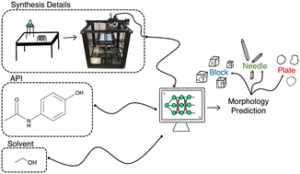 |
Please join us in congratulating this year’s winners!
A celebration of 25 volumes of CrystEngComm!
We are delighted to share with you our latest themed collection: A celebration of 25 volumes of CrystEngComm.
The publication of the 25th volume of CrystEngComm in 2023 is another milestone for the journal. From the launch of CrystEngComm in 1999 as one of the first peer reviewed online-only chemistry journals, it has moved with increasing submissions, from being a journal with no issues, to monthly, then bimonthly and finally weekly publication, publishing almost 15000 articles in 25 years, featuring authors from 105 countries across six continents. CrystEngComm truly is an international journal with an international readership, authorship and Editorial Board.
To mark this exciting milestone for the journal we have put together this collection of articles and highlights, representing some of the most highly-cited work across the areas of research published in CrystEngComm over the years.
Browse some of the articles in the collection below:
| Formation of amorphous calcium carbonate and its transformation into mesostructured calcite
Carlos Rodriguez-Navarro, Krzysztof Kudłacz, Özlem Cizer and Encarnacion Ruiz-Agudo CrystEngComm, 2015,17, 58-72 |
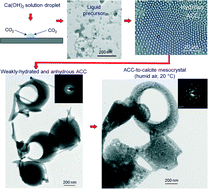 |
| B3LYP augmented with an empirical dispersion term (B3LYP-D*) as applied to molecular crystals
Bartolomeo Civalleri, Claudio M. Zicovich-Wilson, Loredana Valenzano and Piero Ugliengo CrystEngComm, 2008,10, 405-410 |
 |
| Tuning the crystal morphology and size of zeolitic imidazolate framework-8 in aqueous solution by surfactants
Yichang Pan, Dodi Heryadi, Feng Zhou, Lan Zhao, Gabriella Lestari, Haibin Su and Zhiping Lai CrystEngComm, 2011,13, 6937-6940 |
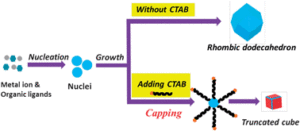 |
| Bulk crystal growth of hybrid perovskite material CH3NH3PbI3
Yangyang Dang, Yang Liu, Youxuan Sun, Dongsheng Yuan, Xiaolong Liu, Weiqun Lu, Guangfeng Liu, Haibing Xia and Xutang Tao CrystEngComm, 2015,17, 665-670 |
 |
| Acid–base crystalline complexes and the pKa rule
Aurora J. Cruz-Cabeza CrystEngComm, 2012,14, 6362-6365 |
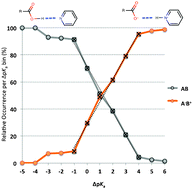 |
| Fingerprinting intermolecular interactions in molecular crystals
Mark A. Spackman and Joshua J. McKinnon CrystEngComm, 2002,4, 378-392 |
 |
| Formation of high crystalline ZIF-8 in an aqueous solution
Koji Kida, Muneyuki Okita, Kosuke Fujita, Shunsuke Tanaka and Yoshikazu Miyake CrystEngComm, 2013,15, 1794-1801 |
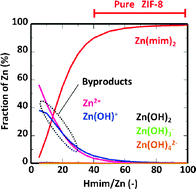 |
| Static and lattice vibrational energy differences between polymorphs
CrystEngComm, 2015,17, 5154-5165 |
 |
| Recent advances in crystal engineering
Christer B. Aakeröy, Neil R. Champness and Christoph Janiak CrystEngComm, 2010,12, 22-43 |
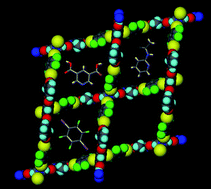 |
The Editorial team hope you enjoy reading these articles, and thank you for helping shape CrystEngComm into the successful resource for the community that it continues to be today!
Editor’s Collection: The application of quantum crystallography to solid-state pharmaceuticals

We are delighted to share with you our latest Editor’s Collection on The application of quantum crystallography to solid-state pharmaceuticals.
This latest collection of recently published articles has been handpicked by CrystEngComm Advisory Board Members, Professor Simon Coles, University of Southampton, UK and Dr Srinivasulu Aitipamula, Institute of Sustainability for Chemicals, Energy and Environment, Singapore.
This Editor’s collection is dedicated to the rapidly growing field of quantum crystallography and features original research articles from experts in the field, highlighting the latest advancements and future directions of Quantum Crystallography in understanding the structure and properties of pharmaceutical-like materials and organic solids. The collection also highlights studies using Quantum Mechanical approaches with tools that are set to be used for Quantum Crystallography (e.g., QTAIM and NCI), giving a glimpse into the types of results that we can expect to see more of as the field matures and is more widely applied.
Browse some of the articles in the collection below:
| Energy partitioning of pharmaceutical co-crystal structures
Birger Dittrich, Lauren E. Connor, Dominic Werthmueller, Nicole Sykes and Anikó Udvarhelyi CrystEngComm, 2023,25, 1101-1115 |
 |
| Crystal engineering, electron density analysis, and in situ variable temperature studies on co-crystal between nicotinic acid and gallic acid sesquihydrate
Infal Iqbal, Arshad Mehmood, Sajida Noureen, Claude Lecomte and Maqsood Ahmed CrystEngComm, 2023,25, 770-784 |
|
| Enhanced luminescence of single-benzene fluorescent molecules through halogen bond cocrystals
Fei Yu, Xiunan Zhang, Hongtu Zhao, Zhicheng Jiang, Ting Wang, Na Wang, Xin Huang, Lina Zhou and Hongxun Hao CrystEngComm, 2022,24, 3537-3545 |
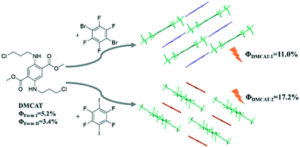 |
Meet the Editors
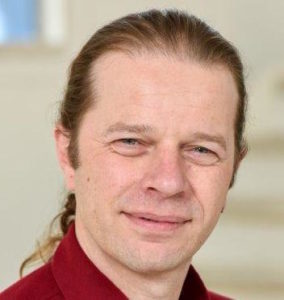 Simon Coles (http://orcid.org/0000-0001-8414-9272) obtained his BSc and PhD in structural systematics and molecular modelling at the University of Wales, Cardiff before a PDRA appointment with the Royal Institution to build the world’s first dedicated small molecule single crystal beamline, 9.8, at the Daresbury synchrotron. In 1998 Simon moved to Southampton to establish a new laboratory and manage the National Crystallography Service. Simon became Director of the National Crystallography Service (www.ncs.ac.uk) in 2009, Director of the UK Physical Sciences Data-science Service (www.psds.ac.uk) in 2019 and recently a lead for the Physical Science Data Infrastructure (www.psdi.ac.uk). Simon is an author on over 900 papers supporting chemical synthesis, in many areas of structural chemistry and in digital/chemical information. He is one of the world’s most prolific chemical crystallographers.
Simon Coles (http://orcid.org/0000-0001-8414-9272) obtained his BSc and PhD in structural systematics and molecular modelling at the University of Wales, Cardiff before a PDRA appointment with the Royal Institution to build the world’s first dedicated small molecule single crystal beamline, 9.8, at the Daresbury synchrotron. In 1998 Simon moved to Southampton to establish a new laboratory and manage the National Crystallography Service. Simon became Director of the National Crystallography Service (www.ncs.ac.uk) in 2009, Director of the UK Physical Sciences Data-science Service (www.psds.ac.uk) in 2019 and recently a lead for the Physical Science Data Infrastructure (www.psdi.ac.uk). Simon is an author on over 900 papers supporting chemical synthesis, in many areas of structural chemistry and in digital/chemical information. He is one of the world’s most prolific chemical crystallographers.
Srinivasulu Aitipamula (https://orcid.org/0000-0001-7640-9513) is a Scientist at the Institute of Sustainability for Chemicals, Energy and Environment (ISCE2) of A*STAR (Agency for Science, Technology and Research), Singapore. He obtained his PhD from the University of Hyderabad, India for his studies on structural and thermochemical studies of host–guest systems and polymorphs. After a short industrial stint as a Manager-R&D at Shasun Research Centre, India, he joined the Institute of Chemical and Engineering Sciences (now ISCE2) and established the co-crystallization capability. He is an author of 60 peer-reviewed research articles including three book chapters. His research interests include crystal engineering, solid-form screening of active pharmaceutical ingredients, encapsulation, and formulation development.
We hope you enjoy these articles and the rest in the Collection.
About CrystEngComm
Published by the Royal Society of Chemistry and with a truly international Editorial Board, CrystEngComm is the forum for the design and understanding of crystalline materials. We welcome studies on the investigation of molecular behaviour within crystals, control of nucleation and crystal growth, engineering of crystal structures, and construction of crystalline materials with tuneable properties and functions.
We invite you to submit your research to CrystEngComm to give your work the global visibility it deserves.











